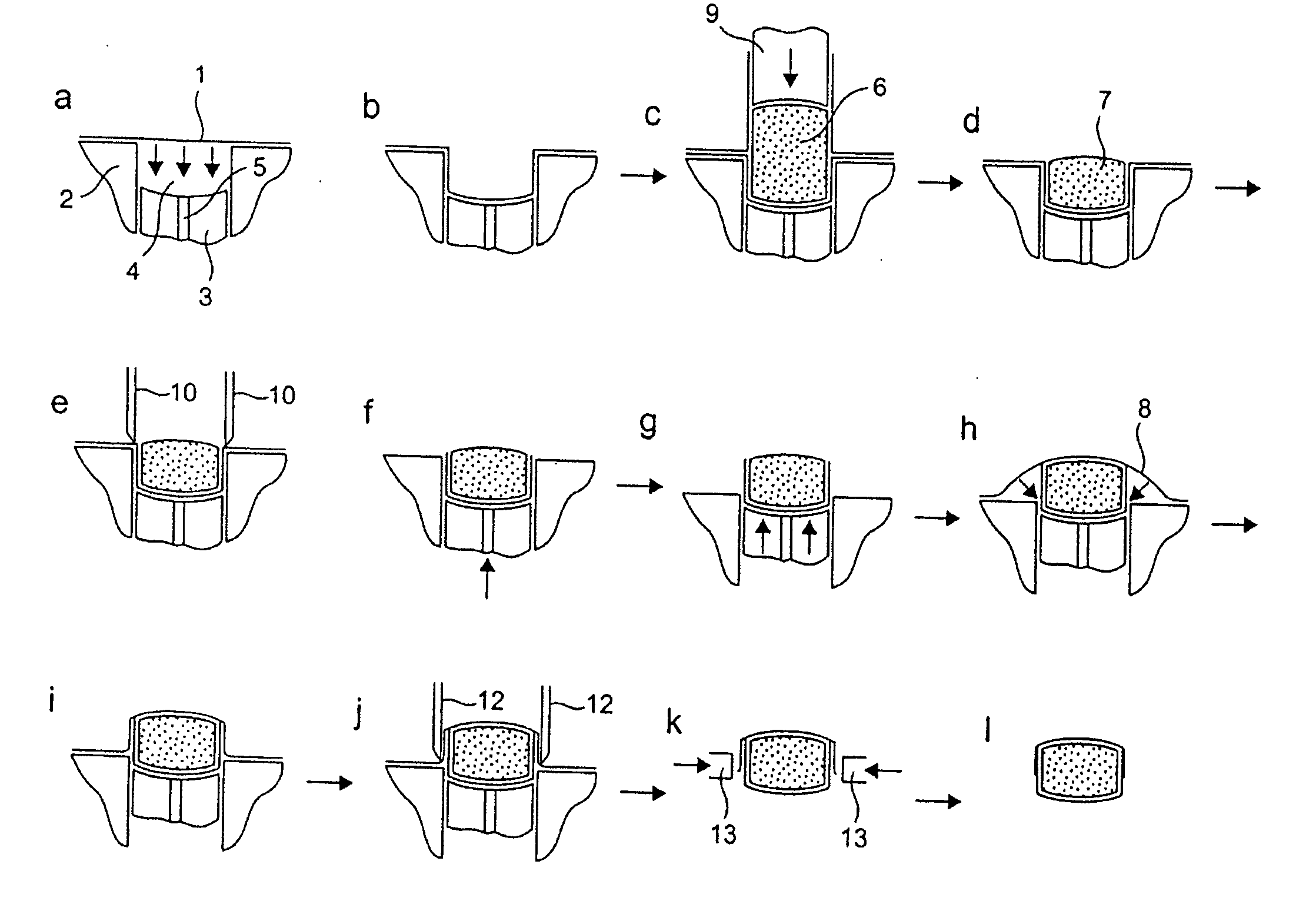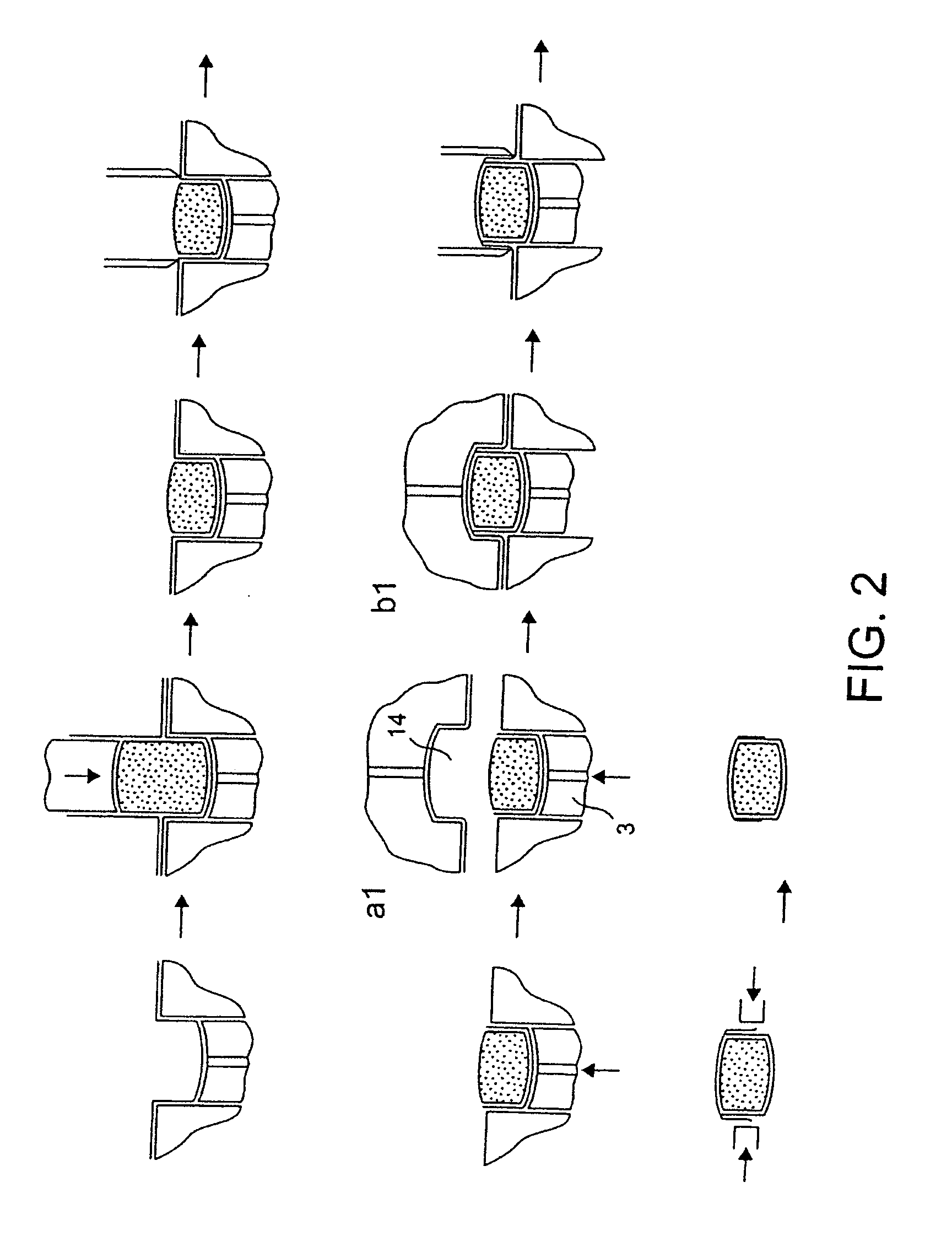Additional improvements in powder compaction and enrobing
a powder and compaction technology, applied in the field of powder compaction, can solve the problems of affecting the disintegration and dissolution rate of active ingredients contained within the capsule, requiring a high level of expertise to produce satisfactory results, and time-consuming methods of coating tablets
- Summary
- Abstract
- Description
- Claims
- Application Information
AI Technical Summary
Benefits of technology
Problems solved by technology
Method used
Image
Examples
example 1
Consumable Items:
[0159] Film 1—may be in the general region of 125 microns thickness, or more preferably about 120 microns, HPMC plasticised with lactic acid 15.25%, and triethylcitrate 10%, and processing aid microcrystalline cellulose 1%
[0160] Film 2 is substantially the same as film 1. In certain embodiments, film 2 may be of lower thickness. The thickness can be in the region of 80 micron thickness, but is more preferably about 100 microns.
[0161] Glue applied to overlap area of first film—Benzyl alcohol 62%, Denatured ethyl alcohol 31%, Potassium acetate 5%, DI water 2%.
Process Description
[0162] Film 1 is thermoformed into single or multiple tablet / caplet shaped pockets in a platen, each pocket containing a lower piston that can be raised or lowered as necessary to suit standard sized tablets and caplets. The tablet shaped pocket also has a raised edge profile around the top perimeter of the pocket. This edge profile is raised 1 mm above the platen surface and has an uppe...
example 2
[0171] Same conditions as Example 1, but the following step replaces “Powder dosing and film 1 cutting” stage:
Powder Dosing and Film 1 Cutting
[0172] A dosing assembly is then placed over the film formed pocket. This consists of a location mask which sits on location dowels in the platen, and a dosing sleeve that rests directly above the film formed pocket, and sits on the raised edge profile. The dosing sleeve exactly matches the dimensions of the film formed pocket. A dose of powder is deposited into the dosing sleeve and falls into the film pocket. The cut is achieved via the cut piston that acts through the dosing sleeve and sweeps any residual powder down into the film pocket below. The level of compaction is controlled by the mass of powder being deposited into the dosing sleeve. The cutting piston cuts through the film as it interferes with the inside of the raised edge profile. The cut piston continues to engage with the raised edge for a further 0.2 mm, and in so doing co...
example 3
[0175] Same as example 1, but the tolerance fit for the first cut piston is the same as that for the second cut piston.
PUM
| Property | Measurement | Unit |
|---|---|---|
| height | aaaaa | aaaaa |
| thickness | aaaaa | aaaaa |
| thickness | aaaaa | aaaaa |
Abstract
Description
Claims
Application Information
 Login to View More
Login to View More - R&D
- Intellectual Property
- Life Sciences
- Materials
- Tech Scout
- Unparalleled Data Quality
- Higher Quality Content
- 60% Fewer Hallucinations
Browse by: Latest US Patents, China's latest patents, Technical Efficacy Thesaurus, Application Domain, Technology Topic, Popular Technical Reports.
© 2025 PatSnap. All rights reserved.Legal|Privacy policy|Modern Slavery Act Transparency Statement|Sitemap|About US| Contact US: help@patsnap.com



